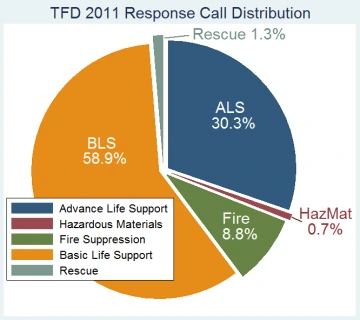"Preventing events means to actively cause something to not happen, and in order to do so, one must understand the circumstances in which an event occurs."
- Anonymous
According to the National Fire Protection Association (NFPA), there are an estimated 1.1 million career and volunteer firefighters in the U.S. Firefighters and emergency medical services personnel have a high incidence of occupational injuries and fatalities. In 2010, 71,875 firefighter injuries were reported in the workplace, in addition to 72 line-of-duty deaths. Forty-five percent of injuries and 29% of fatalities occurred on the fireground.
Approximately 600 emergency service employees of the Tucson Fire Department (TFD) serve the 520,116 permanent residents of the City of Tucson. In 2011, TFD responded to 82,089 emergency incidents, including fire suppression, emergency medical services (EMS) and advanced life support, hazardous material control, and technical rescues (e.g., trench, structural collapse, confined spaces, vehicle extrication, swift water).

Non-fireground operations are clearly responsible for a large portion of firefighter injuries, and the risks present in these other environments should be better understood and managed in order to improve overall firefighter safety. Reference: Karter and Molis, NFPA 2011
The need for enhanced prevention strategies and overall safety promotion in the fire service is evident with a simple look at some of the responsibilities and potential hazards frequently faced by this population:
| Structure fires Wildland/brush fires Motor vehicle crashes Patient search & rescue Technical rescue |
Forcible entry Advanced life support Stair and ladder climb Hose lift and carry Charged hose advancing |
Extreme temperatures Confined spaces Violence Vehicle extrications Hazardous materials |
In addition, all of the hazards can be modified by the sense of immediacy (time), sensory deprivation (e.g. low visibility, high noise), and the weight of the gear (turnouts and SCBA) and equipment used during response activities.
Through the University of Arizona's Mel and Enid Zuckerman College of Public Health, the SPIFi project aligns with the College's goals of conducting and disseminating research in the Southwest and advancing community engagement, practice and service in public health.
“Accidents” do happen, and some individuals are injured in these events; but
just because something is simply labeled an “accident,” does not mean it cannot be prevented.
- Anonymous

